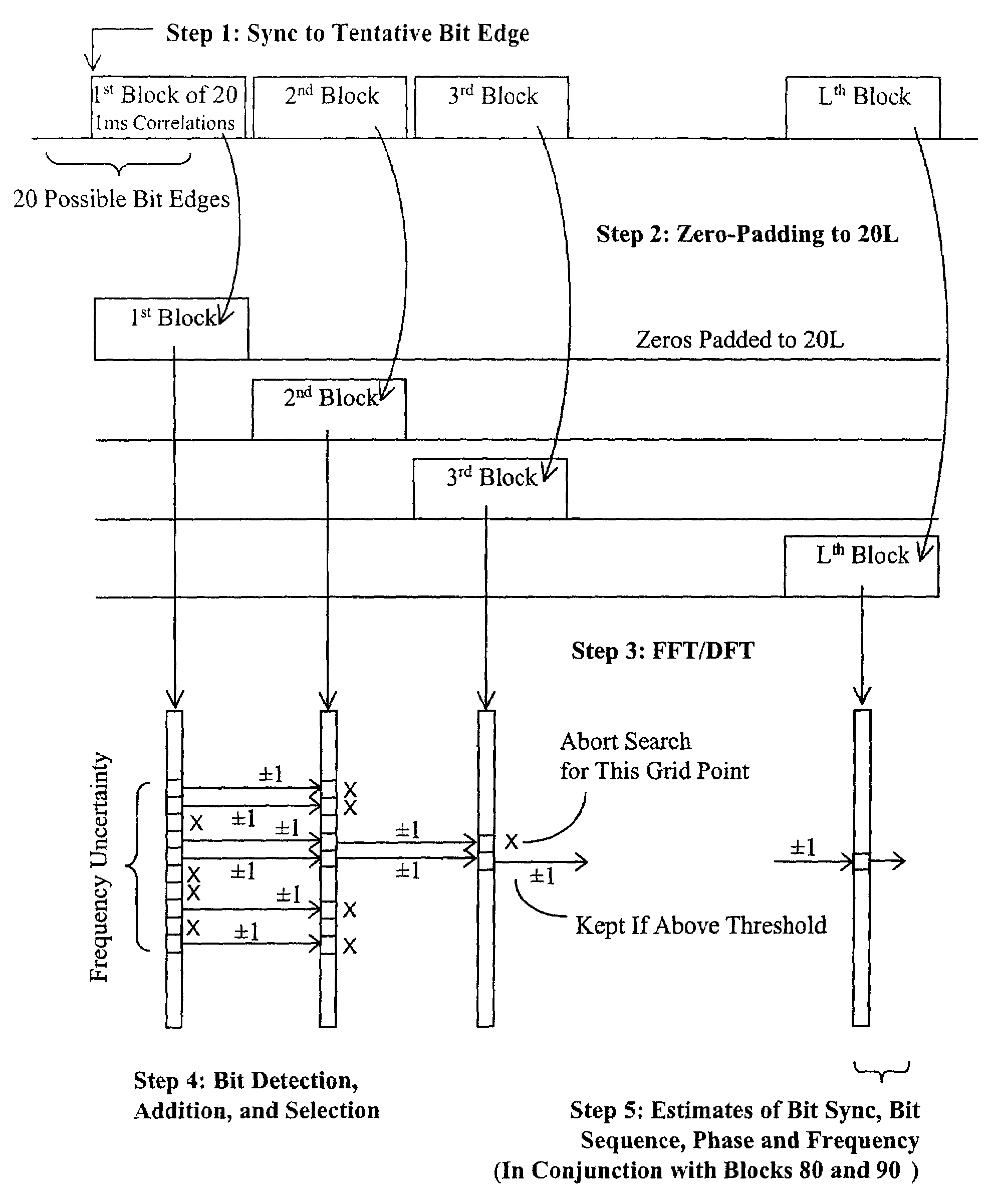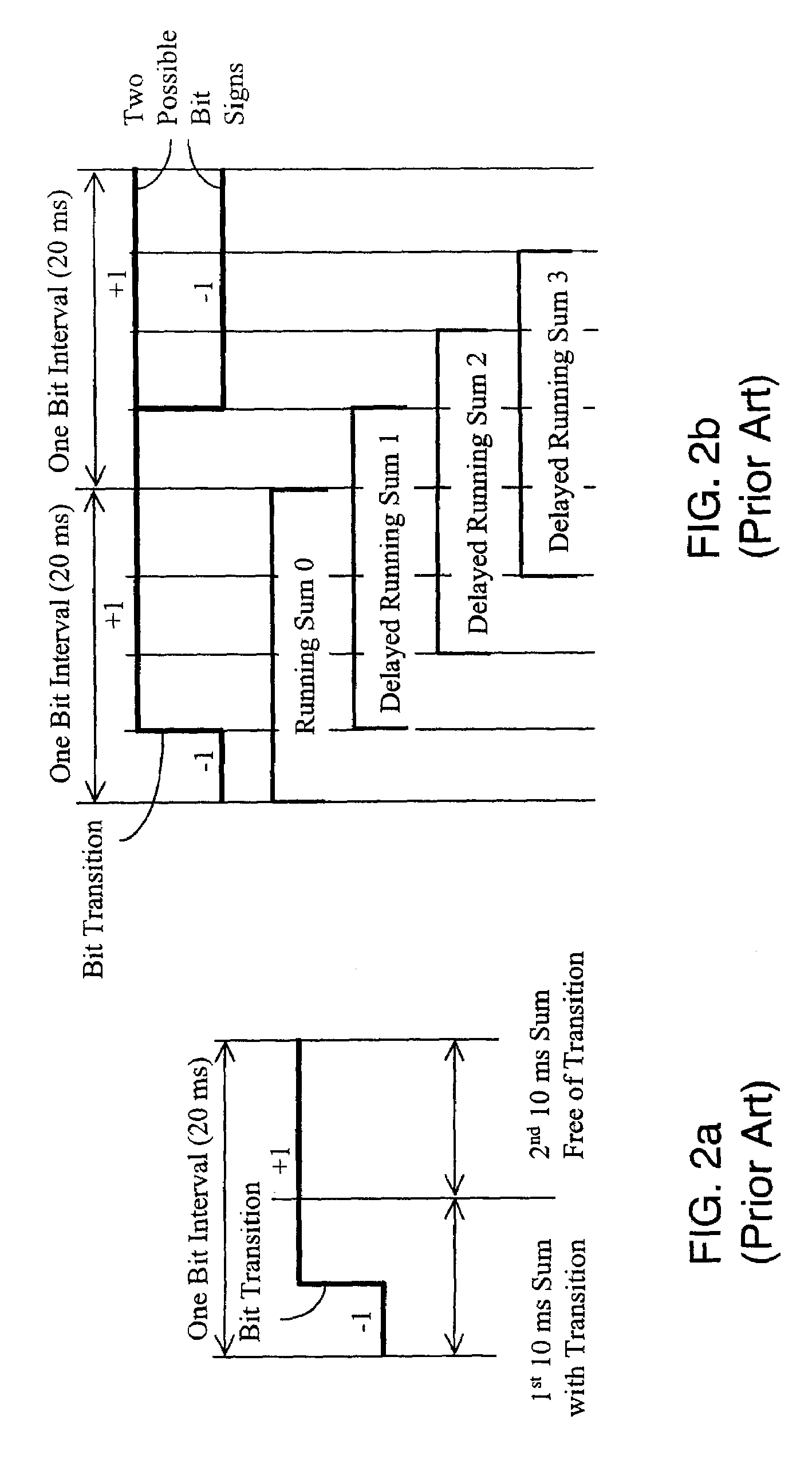Method and device for acquiring weak global navigation satellite system (GNSS) signals
a global navigation satellite and signal acquisition technology, applied in the field of methods and devices for acquiring weak global navigation satellite system (gnss) signals, can solve problems such as excessive latency, achieve the effects of reducing time and frequency uncertainty space, optimizing overall computation, and boosting signal power
- Summary
- Abstract
- Description
- Claims
- Application Information
AI Technical Summary
Benefits of technology
Problems solved by technology
Method used
Image
Examples
Embodiment Construction
[0031]The present invention concerns the device and method for a GNSS receiver capable of acquiring weak satellite signals and extracting time, frequency and other parameters therefrom as an integral part of the receiver's baseband signal processor operations. Although the present invention system and method can be used for the acquisition of various signals used in the GNSS, the present invention system and method are particularly well suited for use with the acquisition of signals from GPS satellites. Accordingly, an exemplary embodiment of the present invention will be described in an application of acquiring weak signals from GPS satellites.
[0032]Referring to FIG. 1, an incoming GPS signal is received at a GPS receiver's RF front-end 7 where it is converted to a digital signal by an analog to digital converter (not shown) and then stored in a digital sample buffer 10. The digital sample buffer 10 can be connected to the RF front-end 7 directly or indirectly via a wireline or wir...
PUM
 Login to View More
Login to View More Abstract
Description
Claims
Application Information
 Login to View More
Login to View More - R&D
- Intellectual Property
- Life Sciences
- Materials
- Tech Scout
- Unparalleled Data Quality
- Higher Quality Content
- 60% Fewer Hallucinations
Browse by: Latest US Patents, China's latest patents, Technical Efficacy Thesaurus, Application Domain, Technology Topic, Popular Technical Reports.
© 2025 PatSnap. All rights reserved.Legal|Privacy policy|Modern Slavery Act Transparency Statement|Sitemap|About US| Contact US: help@patsnap.com



